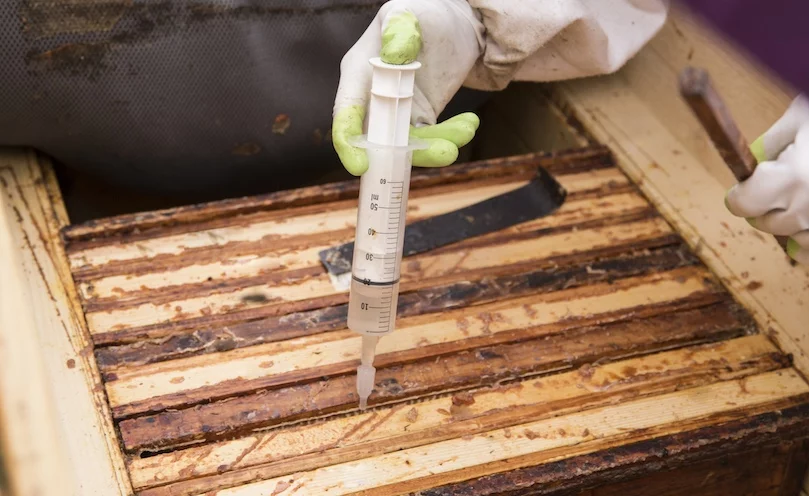Managing Varroa destructor mites is a critical task for beekeepers, particularly during the summer when the presence of brood can complicate treatment strategies. One of the methods available for controlling these pests is the use of oxalic acid dribble. While typically recommended for use in broodless periods, some beekeepers consider using this treatment during the summer. However, the presence of brood presents unique challenges that must be carefully managed. This article explores the considerations and best practices for using oxalic acid dribble during summer when brood is present.
Why Oxalic Acid Dribble?
Oxalic acid dribble is a popular method for Varroa mite control due to its effectiveness, affordability, and ease of application. The treatment involves mixing oxalic acid with sugar syrup and dribbling the solution directly onto the bees clustered between the frames. The bees then distribute the acid throughout the colony, killing Varroa mites that are on the adult bees.
Challenges of Treating During Summer
Summer is a busy time for honeybee colonies. It’s the peak season for honey production, and colonies are often brimming with brood. This period of growth and expansion, however, also provides an opportunity for Varroa mites to thrive, especially since they reproduce within the capped brood cells. Here are some challenges of using oxalic acid dribble during summer:
- Reduced Efficacy Due to Brood: Oxalic acid is most effective against Varroa mites that are on adult bees (phoretic mites). Mites inside capped brood cells are largely unaffected by the treatment. During summer, with a high percentage of mites hidden within the brood, the efficacy of oxalic acid dribble is significantly reduced.
- Risk to Brood Health: Oxalic acid dribble can be stressful for bees, particularly for the brood. If applied too frequently or at incorrect dosages, it may harm developing larvae, leading to reduced colony health.
- Honey Contamination Concerns: Applying oxalic acid during honey flow season raises concerns about potential contamination of honey. Although oxalic acid is naturally occurring and leaves minimal residues, there is still a risk if not used carefully.
Best Practices for Summer Application
If you decide to use oxalic acid dribble during the summer, here are some best practices to consider:
- Target Specific Periods: To maximize efficacy, target periods when the brood cycle is naturally lower. For example, after a natural brood break or after a queen has been temporarily caged. This strategy can help reduce the number of mites in the colony even when brood is present.
- Use a Combined Approach: Combine oxalic acid dribble with other treatments or methods to improve overall mite control. For instance, use oxalic acid in conjunction with brood interruption techniques or mechanical methods like drone brood removal.
- Correct Dosage: Follow the recommended dosage and concentration carefully. Overdosing can stress the colony, harm brood, and reduce honey production, while underdosing might not effectively control the mites.
- Post-Harvest Treatment: If honey contamination is a concern, consider applying oxalic acid dribble after the main honey harvest, when there is little to no honey in the supers. This timing allows for treatment while minimizing the risk of contaminating your honey crop.
- Monitor Mite Levels: Regularly monitor mite levels before and after treatment to assess the effectiveness of the oxalic acid dribble. Use methods like powdered sugar rolls or alcohol washes to get accurate mite counts.
- Minimize Stress: Be mindful of the overall health and stress levels of your colony. Summer can be a demanding time for bees, so ensure they have adequate nutrition, water, and protection from environmental stressors like extreme heat.
Conclusion
Using oxalic acid dribble during the summer can be a viable option for managing Varroa mites, but it requires careful consideration of the presence of brood and the overall health of your colony. While the treatment is less effective when brood is present, strategic application, proper dosing, and combining it with other methods can help mitigate these challenges. By following best practices, you can manage Varroa mites during the summer while maintaining a healthy, productive colony.
